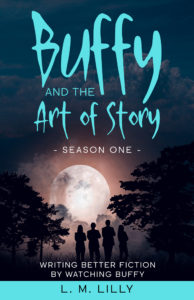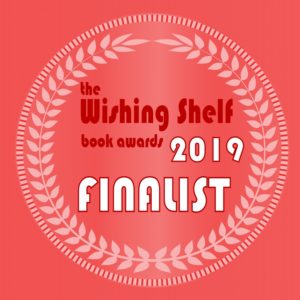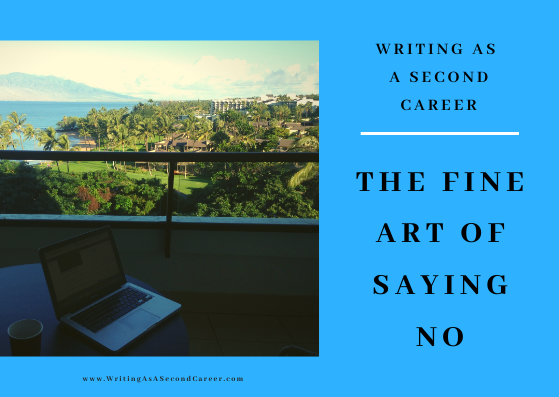For a lot of writers, it takes a year or more to finish one novel.
That’s especially true if you’re working full time at another career or have other significant responsibilities.
That time frame can feel a bit discouraging even when you’re happy about finishing your book. Because you spent all that time, and now you have only one book to market.
But there is good news.
One novel — or one more novel if you’ve already published some — is really multiple products. Seeing it as if it were just one means leaving royalties on the table.
And failing to reach a lot of readers who might love your work.
The product list below assumes you’re in control of and publishing your own work. If you’re looking for a traditional publishing contract instead, however, it’s still key to understand what you or your publisher can do with your work. If nothing else, it might help you decide what rights you’re willing to offer.
E-Book Editions (5+ Products)
Many readers these days read only e-books.
Some prefer e-books over paper to save shelf space. Others like the pricing, which is usually cheaper than trade paperback or hardback books. I personally like e-books because I can adjust the type size for my eyes (which like big print these days).
Because there are multiple platforms where you can publish an e-book, that means one e-book is really multiple products you can market to completely different sets of readers.
My fiction and nonfiction books are available in Kindle, Kobo, Nook, AppleBook, and GooglePlay editions. You can also make your e-books available to libraries through Kobo or through other distributors like Draft2Digital.
Print Books (4+ Products)
Despite what I said above, and many predictions over the years that e-books would make paper books disappear, it hasn’t happened.
For all the readers that love only e-books, others read in both formats, and some prefer print alone. For that reason, I always publish at least one paperback edition of each of my novels.
- Trade Paperback For Online Sales
The easiest way I’ve found to publish a trade paperback is through Amazon’s KDP Dashboard. The books are then available on Amazon and appear on the same sales page as your Kindle editions.
But that’s not the only way to sell paper books.
- Trade Paperback For Bookstore Sales
Pretty much all authors would like to see their books on bookstore shelves. And many readers, including me, like visiting bookstores and supporting them.
Every bookstore owner I’ve talked to, though, will not stock a book published through KDP. (Bookstores generally are not big fans of Amazon.) So if you want your book to be available through bookstores, you almost always need to publish another edition.
I use IngramSpark to publish trade paperbacks that bookstores can order or stock.
Another product you can create from your one novel is a large print edition. I just published one for the third book in my Q.C. Davis mystery series.
My Kindle editions from that series tend to get lost because there are so many hugely popular mystery authors. Readers are far more apt to find my large print editions and give them a try because there simply aren’t as many large print mysteries available.
Some authors also publish hardback editions of their novels. Right now, I don’t know of any way to do that through KDP, but it is possible through IngramSpark. I haven’t done that yet, but I’m considering it, as I recently had a reader ask me through Twitter if I had hardbacks available.
Finally, you can offer autographed copies of your paperback or hardback book. So far I’ve only sold autographed copies at book fairs.
But more than once in the last year readers have reached out to me asking if they could buy autographed copies from me by mail. So I’m thinking I am going to set up direct sales from my website and offer autographed copies for a premium price.
Audio (2+ Products)
Audio has been growing in popularity.
As I’m writing this, many parts of the United States are still under lockdown due to Covid-19. That means that not as many people are listening to audiobooks or podcasts as they commute. But many listeners, including me, listen while doing household tasks like cleaning or laundry or while exercising. Others sit down and simply listen.
Some of those listeners never otherwise have time to read. So if your book is not available in audio they may never find it.
The main audio product obviously is the audiobook. I’ve created and sold them so far through Amazon’s ACX platform and through Findaway Voices. I also licensed audiobook rights to my first Q.C. Davis Mystery to BlunderWoman Productions, an audiobook publisher.
A caveat for audiobooks: The production costs can be high, so unless you want to seek out a production company deal, you may want to wait until the book earns royalties in other formats before you invest in an audiobook.
Another potential product is a podcast. While most podcasts are informational and so fall in the nonfiction category, some authors do podcast their own fiction.
While for the most part you won’t make money directly from podcasting, you might make money through Patreon, podcast sponsorship, or advertising. I personally think it’s a little bit harder to do this for fiction if you are an unknown author. But it is still a fairly new field, so it’s worth thinking about it.
Publishing each of the above types of products takes some time, effort, and expense. But each one can reach a different type of reader and expand your chances of earning income from your books.
A mini-course I took online from Joanna Penn of The Creative Penn on developing multiple streams of income is what prompted me to start looking more closely at what else I could be doing with each of my books. You may find the courses helpful as well.
That’s all for today. Until next time —
L. M. Lilly
P.S. I am an affiliate and get a small fee if you opt to take a course through my link, but that doesn’t change the price to you. Or change how inspiring, informative, and immediately helpful I’ve found each of Joanna’s courses that I’ve taken.
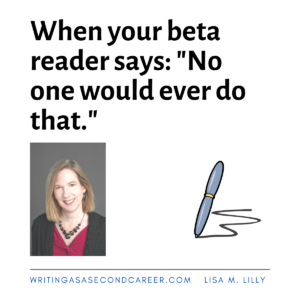 Writers’ group members and beta readers (readers who give feedback on early drafts) can offer valuable help. But they don’t always phrase their comments in a way that’s easy to listen to.
Writers’ group members and beta readers (readers who give feedback on early drafts) can offer valuable help. But they don’t always phrase their comments in a way that’s easy to listen to. But — and this is an important but — even if everyone else got it, ask yourself why your character made that choice or said what they said.
But — and this is an important but — even if everyone else got it, ask yourself why your character made that choice or said what they said. Authorpreneur is how some writers who independently publish their own work describe themselves.
Authorpreneur is how some writers who independently publish their own work describe themselves.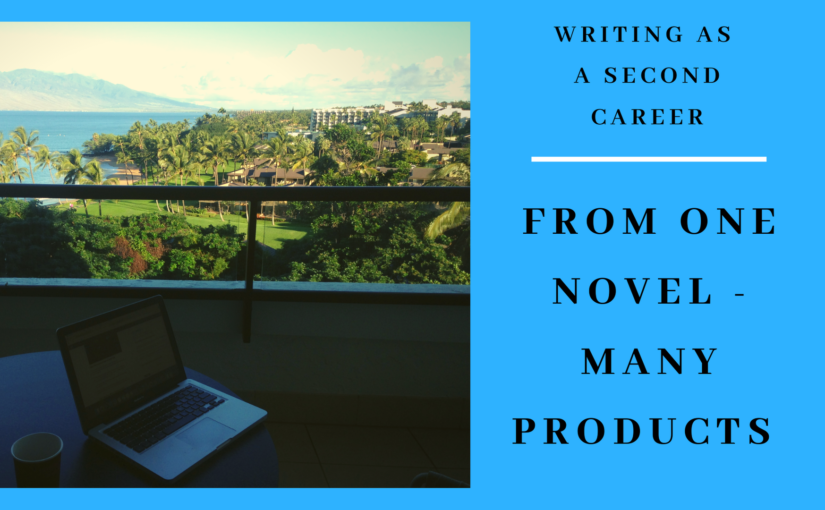

 Recently, I started feeling more and more stressed about time management. As if I were constantly failing to do something important, but I didn’t know what it was.
Recently, I started feeling more and more stressed about time management. As if I were constantly failing to do something important, but I didn’t know what it was.